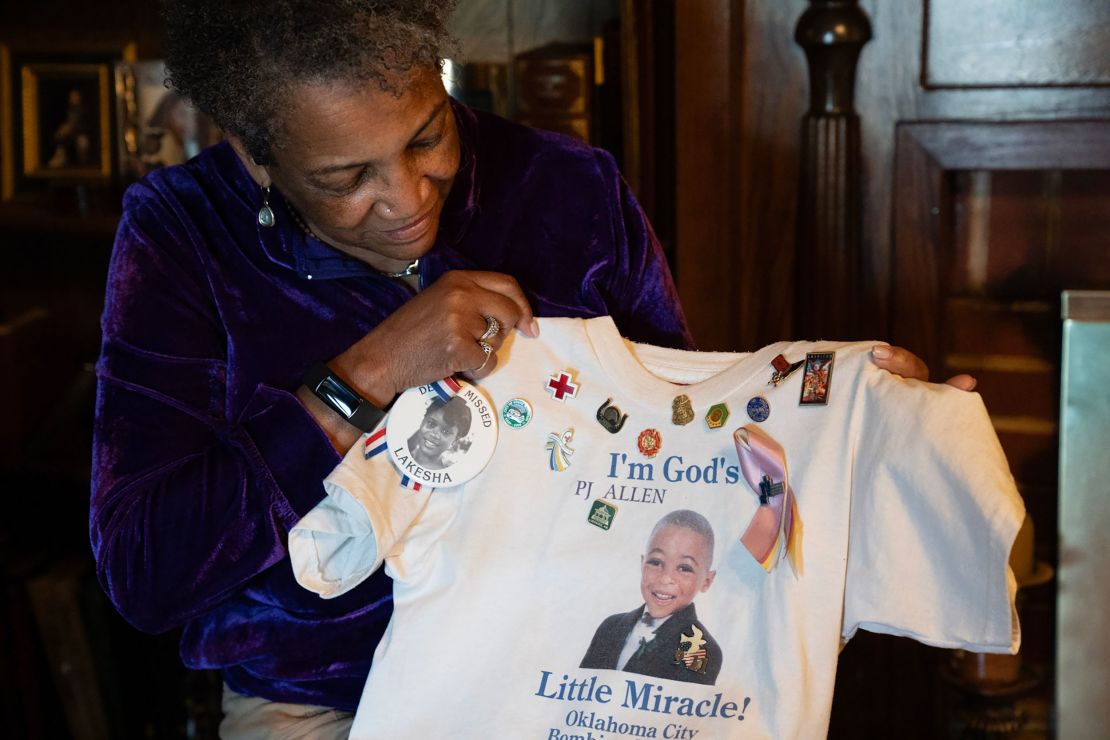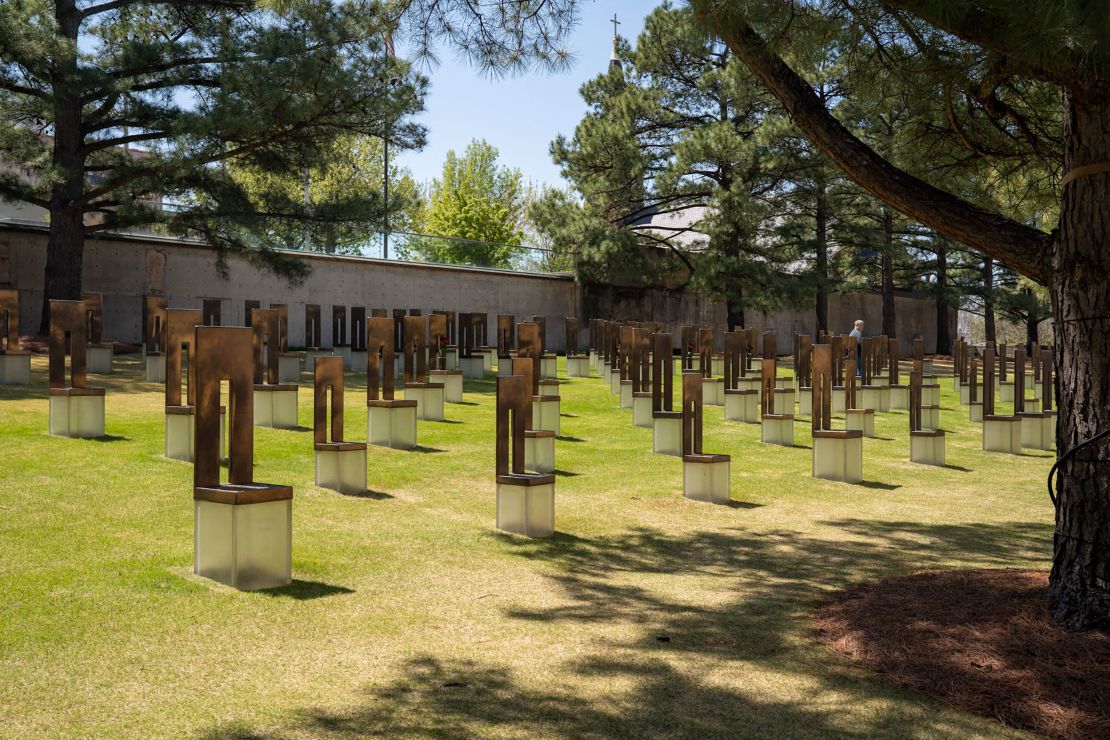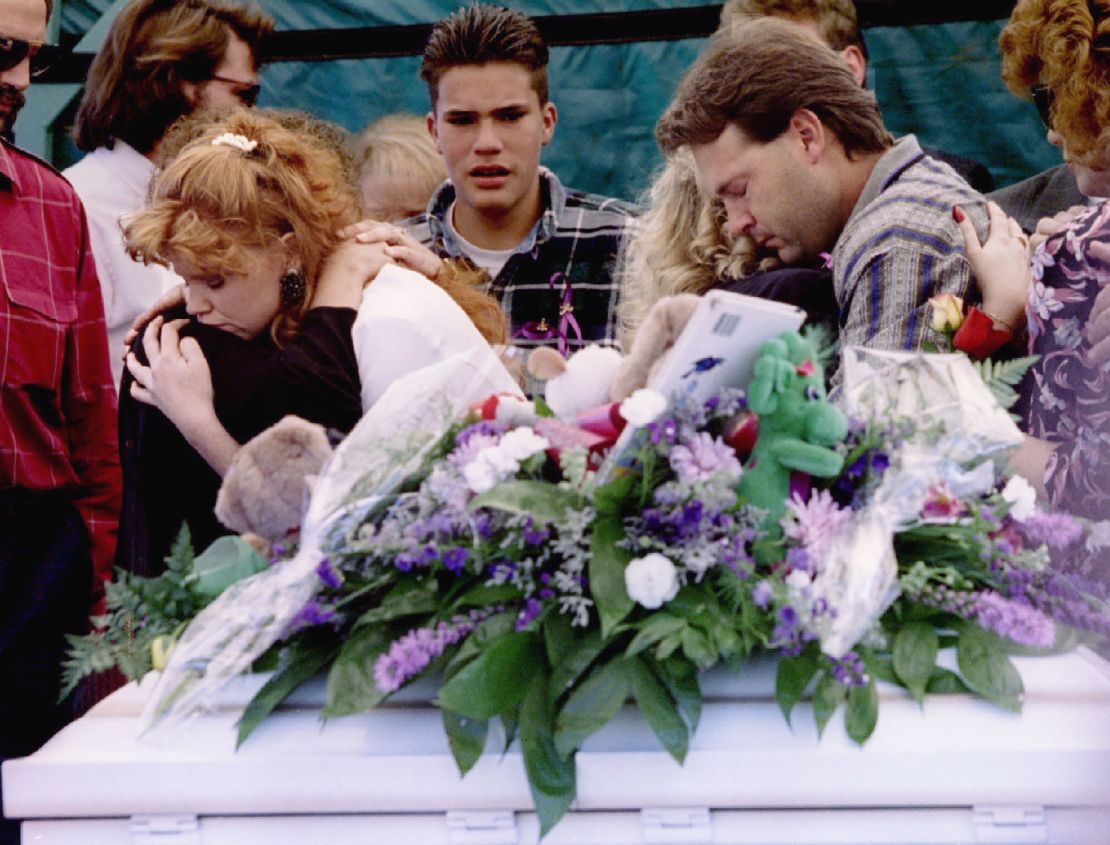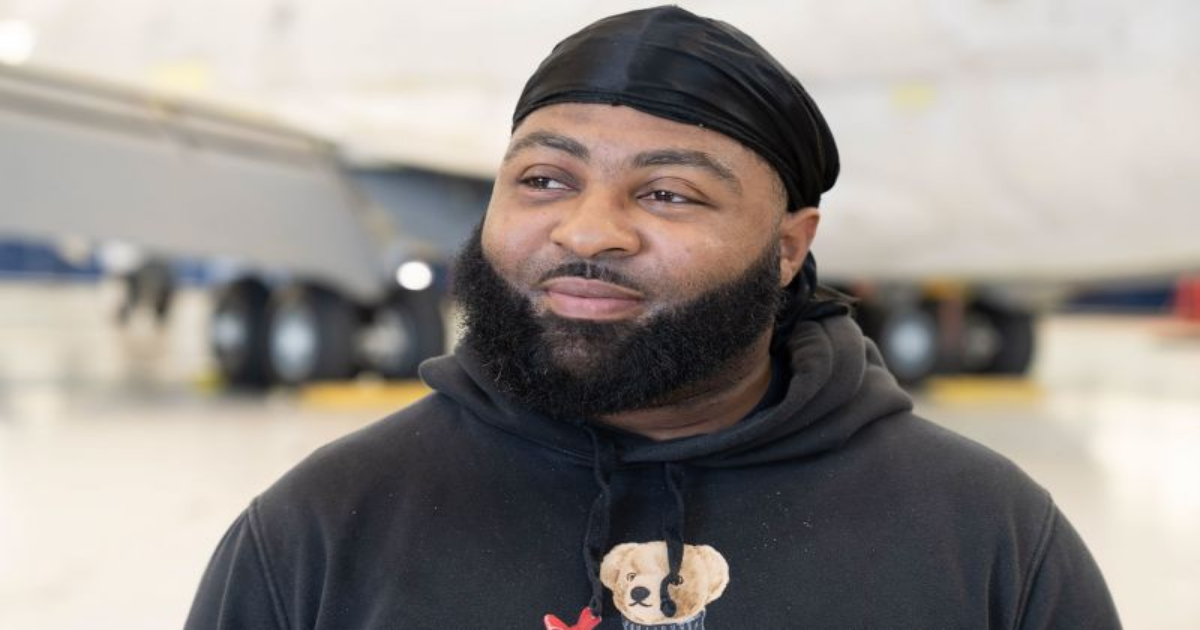Oklahoma City, Oklahoma CNN —
PJ Allen’s tiny body was horrifically burned when rescuers found him. Later in the hospital, the toddler was so covered in bandages, his grandmother had only his belly button to recognize him.
He bears the scars of the deadliest homegrown terrorist attack in US history but has no memory of the day that’s been seared into the minds of older generations. His 73-year-old grandmother, Deloris Watson, can recall every detail.
She remembers dropping off the then 18-month-old Allen at daycare at the Alfred P. Murrah Federal Building in Oklahoma City on the morning of April 19, 1995. She was supposed to meet with the daycare’s director at 9 a.m. to discuss the boy’s recent asthma diagnosis, she told CNN. But after learning the appointment would be canceled, she went to take her wristwatch to a local repair shop, just a few blocks away.
At 9:02 a.m., she was driving when she heard and felt a huge explosion. She jumped out of her truck and ran up the street, trying to make sense of the calamity unfolding downtown, she said. As clouds of thick smoke and dust began to part, the horror set in. The building that housed the daycare was now a mangled, catastrophic mess.
Emergency responders rushed to the ruins, finding victims inside and on the street. Hours later, Watson found her grandson at the children’s hospital. The boy had burns across his body and doctors still had no accurate identification for him.
But Watson recognized her grandson’s belly button instantly amid the bandages. She knew it belonged to PJ; she was raising him as her own son.
“I said, ‘That is my baby’,” Watson said, recalling that tragic day. The hospital staff asked her how she knew it was him. “I said, ‘I diaper him. I powder him. I bathe him. I know every inch of that child. That is my child.’”
PJ Allen would become the youngest to survive the bombing that took 168 other lives, including 19 children. He was one of only six “miracle babies” to live after Timothy McVeigh detonated a van full of explosives, destroying a nine-story building in what the FBI ranks as the deadliest act of domestic terrorism in modern American history.

While the shocking event became a flashpoint of the ‘90s and remains a “where were you when” moment for older millennials and the generations before them, for most under 35, it’s a moment of history learned about at schools or in documentaries. Some have never heard about it at all. It’s buried by a long series of attacks that have scarred the past quarter century, like 9/11, the Boston marathon bombing, and mass shootings.
And as time creates distance and as society’s collective memory grows spotty, those close to the bombing fear that the lessons learned from that day — and the legacies of those lost — will fade, too.
The 30th anniversary marks an eternity for some. For others, it’s only a blip in time. Or perhaps even both. And for PJ Allen at least, he feels grateful he can’t remember.
“I’m pretty sure I wouldn’t want to remember what happened that day,” he said. “I’m sure that those who do remember wish, for some of the parts, they didn’t.”
The Oklahoma City National Memorial and Museum makes it a mission to not only help people remember, but also to heal. Located at the site of the bombing, the memorial is renowned for its serene dedication to the victims. Next to a peaceful reflection pool is the Field of Empty Chairs, consisting of 168 bronze and granite chairs, each one imprinted with the name of a victim.
The grounds are frequented by not only those with ties to the bombing, but groups of young students.

“Half the population of Oklahoma City now either wasn’t born or didn’t live here then,” said Dr. Susan Chambers, chair of the memorial’s foundation and a first responder after the bombing. She said the museum hosts panels and educational events to keep the bombing relevant, especially since so many of its hallmark themes — like resilience and violence — are enduring concepts in life.
“People have to understand that violence is never the answer,” she said. “We do so many things to try to make people understand that you don’t have a disagreement and then you do a senseless act of violence.”
Chambers said the grief process has been different for every family, and some are still struggling to cope and process, a reminder that time doesn’t always heal all wounds. Some find comfort in the museum’s Gallery of Honor — a room with 168 shadow boxes with personal items that belonged to each victim. Chambers described the area as a time capsule. “The Lion King” figurines from the movie released the previous summer can be found in the box for one child; a tiny Nike sneaker is in another.
“(Their family members) wanted the people who came in here to connect with the humanity of them, to make sure that they knew they were not just a victim. Not just someone who was killed,” Chambers said. “They wanted to make sure that you, when you looked in that box, that you would remember them.”
Edye Raines, who lost her two little boys in the bombing, chose a plastic toy seal for one son’s shadowbox and a stuffed Dalmatian toy for the other. She wonders what they would be like now in their 30s. “They were just good, good babies,” she said. “Good, good kids.”

Raines was 22 years old when she dropped off 3-year-old Chase and his little brother Colton, who was 2, at the daycare. She was only going to leave them for two hours that day, because she had just closed on her first home the night before and promised the boys she would pick them up early and start painting at the new house together. “I was on cloud nine,” she said, recalling how she felt that morning about their plans for the day. “It was the best day of my life.”
Less than an hour after drop-off, Raines was about to eat some office birthday cake with coworkers when she heard an explosion. Minutes later, she and her mother, Kathy, who worked in the same building, started running towards the billowing smoke just four blocks away.
“When I walked around to the front of the building, I knew Chase and Colton were dead,” Raines said. Her brother, a police officer at the time, would be the one to find their small bodies.
Now, three decades later, Raines has two other adult children, to whom she credits much of her healing. But she still feels her sons’ presence all the time, she said. She unintentionally opens her phone at 9:02, for example, or she’ll see the numbers “902” on license plates or in other spots — events she describes as small moments of remembrance. “I think those are little signs.”
“I can’t even imagine if one of them had lived and the other had died. I don’t think that would’ve worked out. I think that they were right where they were meant to be on that day and time. And whatever the purpose or reason — it just happened. And that’s what I’ve had to deal with,” she said. “And it’s OK.”
She makes her living as an equine dentist, traveling all over the country to work on horses. Just last month, she was in California and met a man who would be Colton’s age now — about 32. She spoke about the bombing, but the man said he’d never heard of it. She showed him some links about the event and felt astonished by his stunned reaction to the images.
“It’s weird to me to think that someone who’s so much older than I was at the time can have no clue about it,” she said. It’s not his fault, she said, adding it’s difficult for anyone to keep up with the violence of the past three decades. “It’s so commonplace … It’s like, well, which one? Which shooting? Which bombing? You just don’t even know because it’s so regular. It just happens all the time.”
“It’s nonstop,” she continued. “It’s an onslaught of, just, terror.”
Raines has chosen to let go of hatred and live in gratitude and kindness, she said, believing life is too short to live in anger. But she still wants people to remember, and she finds peace in visiting the memorial annually. She limits her visits to once a year, saying it means more to her that way.
“The place is beautiful,” she said. “Long after I’m gone, it’s still going to be there. So, their memories will stay alive.”
Thirty years after his grandmother found him in the hospital, Allen now serves as an avionics technician at Tinker Air Force Base in Oklahoma City, working on military aircraft. He spent six weeks in the hospital after the bombing, with burns to 55% of his body, broken bones, significant lung damage, various head traumas, and damaged vocal cords.
His childhood was full of hospital appointments and emergency room visits. And he would spend nearly 10 years after the bombing with a tracheotomy tube attached to his neck to help him breathe. To this day, he still has issues with breathing, but in his words, he’s “too lucky to be alive” to feel resentment about his situation.
“It’s the only life I’ve known,” he said. “This is my normal.”

Due to his burns and injuries, he played outside at night. His grandmother built an internal room at her home that had no windows, keeping him protected during the day from the sun.
Allen credits his grandmother and family with ensuring he lived life like a typical kid in Oklahoma — getting him a spot on a little league baseball team and a basketball team, though he didn’t get to play much. For a good chunk of his childhood, he didn’t even realize he was injured. His family especially sought to ward off survivor’s guilt, he said, teaching him to find meaning in his life instead.
“They just never let me live with doubt,” he said. “I believe that we all survived for a reason, and it’s up to us to go through life and try to figure out what that is. For me, I believe that trying to find a way to give back is my purpose.”
His grandmother brought him to the annual commemorations of the bombing as a child, a recurring trip that young Allen didn’t understand. It wasn’t until he was about 7 or 8 that he first grasped his injuries were connected to those once-a-year events. Later on, at school, he learned more about the bombing alongside his other classmates. “Sometimes they would acknowledge it,” he said. “Most of the time, they treated me as a normal person.”
Gaining more perspective with age, Allen said he wants people to realize that families who lost loved ones are still affected to this day. He hopes to honor them by not taking life for granted.
“Instead of trying to feel sorry for my breathing problems or just different ailments, I try to put that energy towards finding (my) purpose here. And that’s what I’ve been trying to do,” he said. “I believe I’m really close.”
